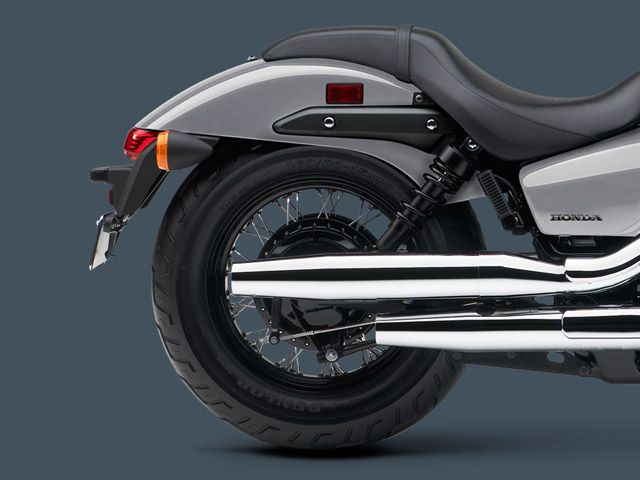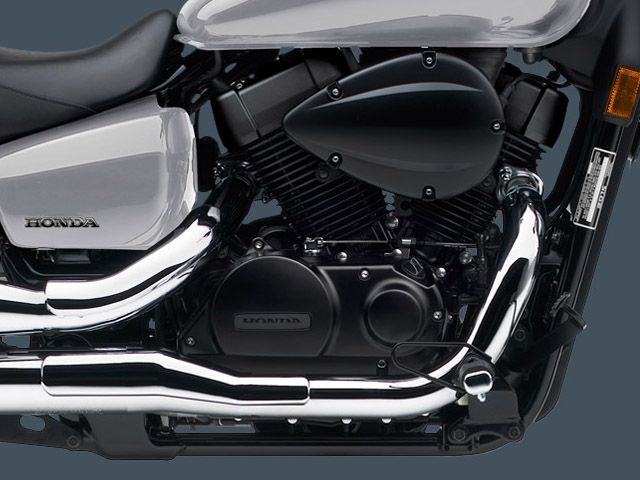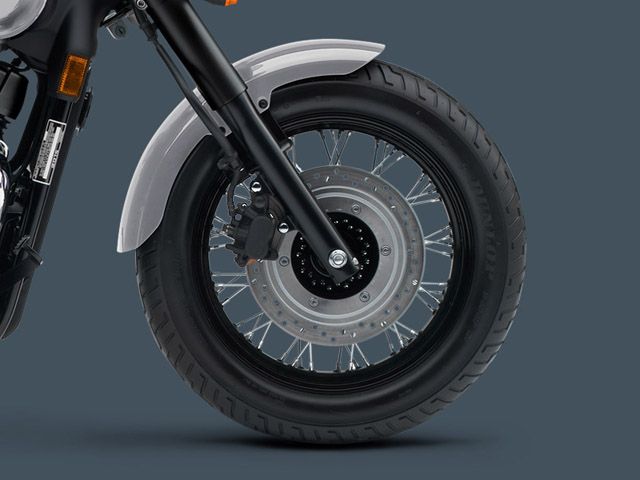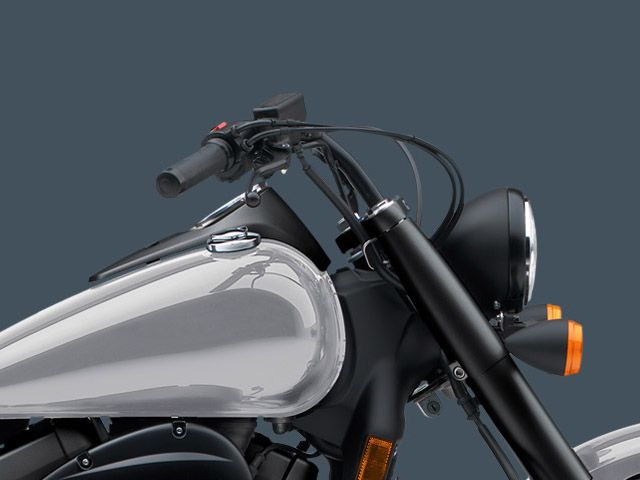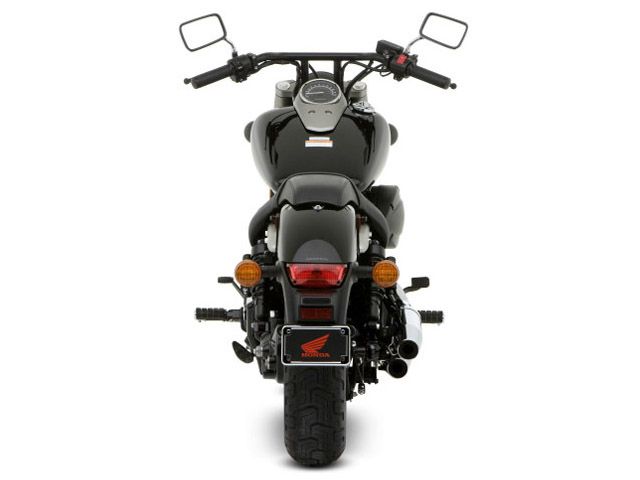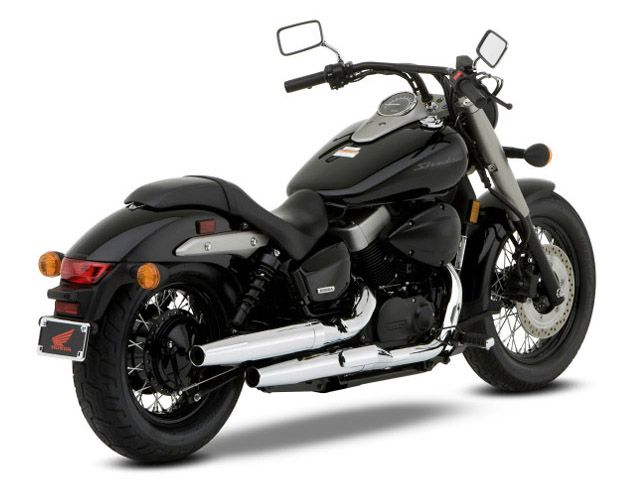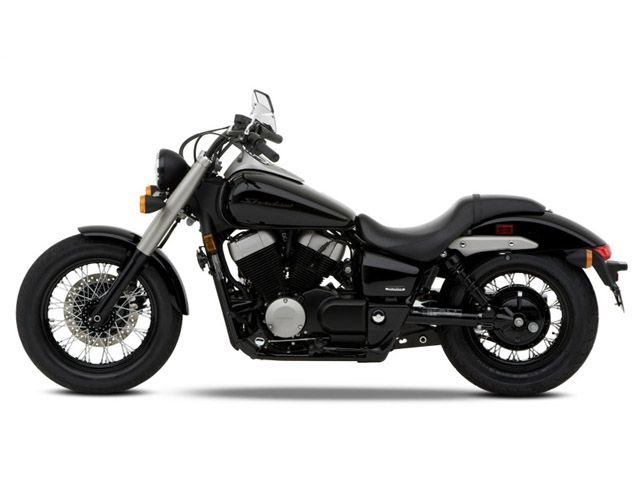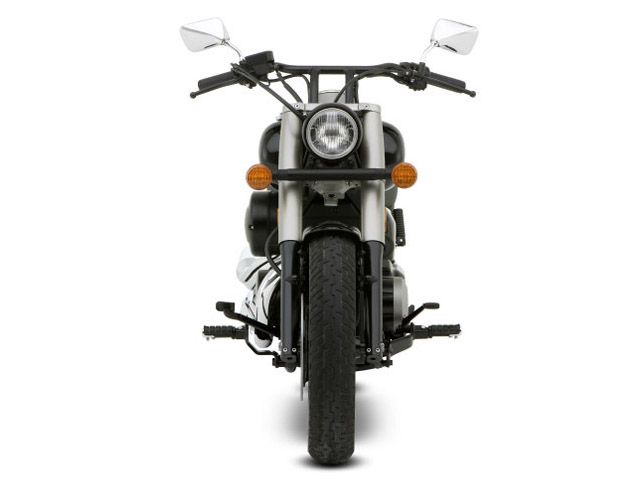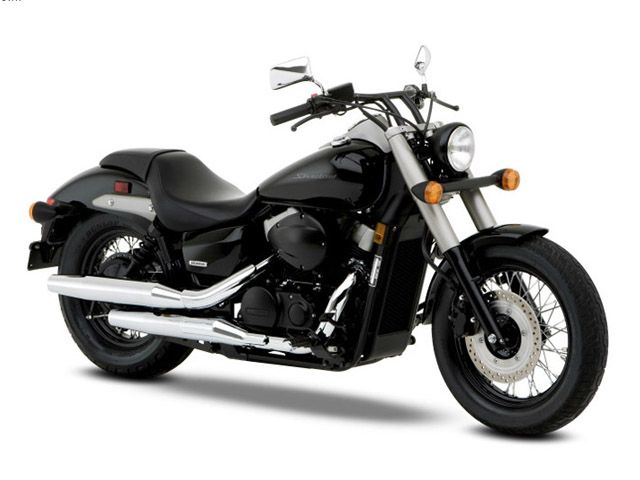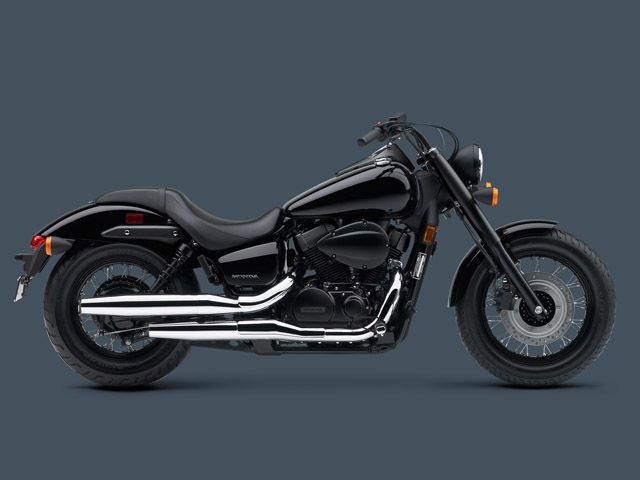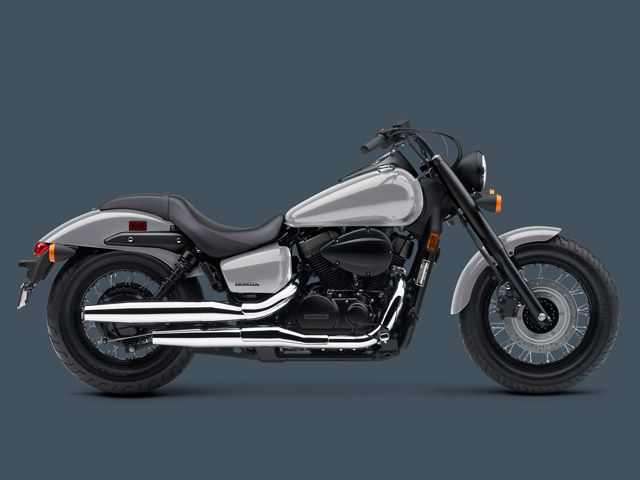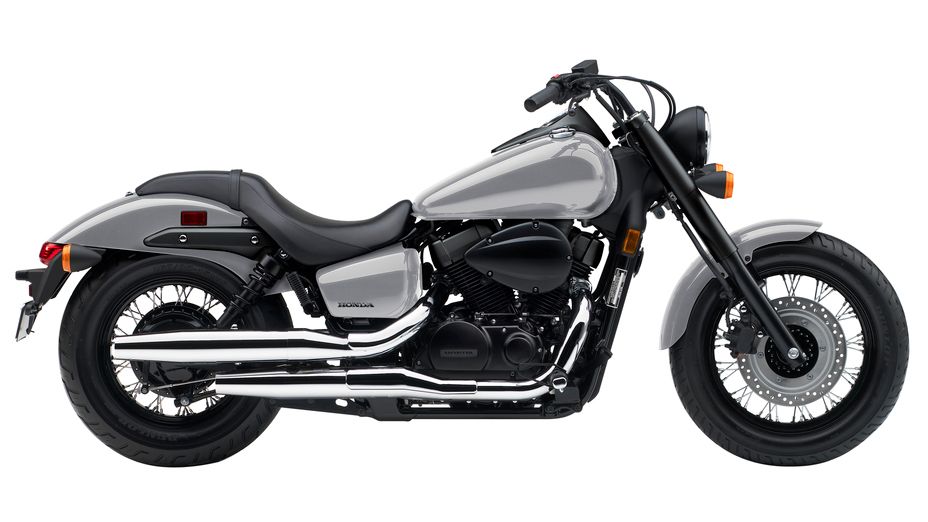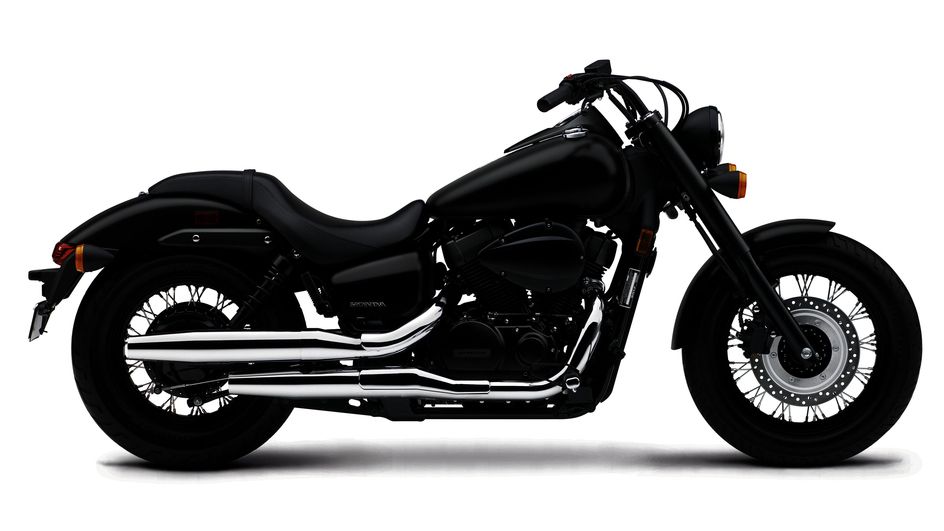In its promotion of the Shadow->ke1737 Phantom, Honda->ke291 wants me to embrace my dark side; but I already do embrace it. I have a safe word and everything. Of course, the “Red Riders” aren't talking about whips and chains inside a ten-foot-tall leather tent (though one can always hope...), and I don't expect to see any gimp suit-style riding apparel anytime soon, but I do see what the factory means.
The Phantom certainly carries a dark panache that raises the specter (forgive the pun) of the outlaw blackout look that has been picking up popular momentum over the last five years or so. Will Honda offer anything in the Shadow Phantom to make me use my safe word?
Continue reading for my review of the Honda Shadow Phantom.
2015 - 2017 Honda Shadow Phantom
- Make: Array
- Model: 2015 - 2017 Honda Shadow Phantom
- Engine/Motor: Liquid-cooled 52 degrees V-twin
Design
Honda is certainly going for that "boulevard bruiser" look. I like the not-quite-26-inch seat height and the narrow 'waist' at the seat-tank junction. As a height-challenged person, being able to sit on the bike and put my feet down is a plus. The 549-pound curb weight is a plus for me as a woman with not a lot of upper body strength to muscle around a heavy bike.
I also like the gunfighter-style seat, but that's about it. While the idea of making a more powerful impact by not going for colorful paint and chrome bling can be a strong statement, it completely misses the mark for me in the Shadow Phantom. The finish isn't as elegant as one might have hoped, and I'm not really feeling the sheen of the semi-matte paint, it just comes off looking a trifle cheap.
Oh, and a flanged fuel tank in this day and age? Really guys? To be fair, these issues are really only readily apparent upon close inspection, and once you back your perspective off 50 feet or so where only the overall generalities are apparent, that negative impression lessens quite a bit.
Chassis
There is nothing extraordinary or groundbreaking about the chassis -- just the standard, tubular-steel fare set up in the ubiquitous double-downtube/double cradle configuration, and while that might be a bit boring, it's safe, and it fits the look the factory was going for.
The steering head is set for a 34-degree rake with a whopping 6.3 inches of trail; stellar numbers for stability at speed, but sure to feel a little reluctant in the corners especially with the width of the 120/90 front and 160/80 rear tires factored into the equation. One thing Honda definitely got right however, is the laced rims. To me, nothing says class like good, old-fashioned, tensioned-spoke rims, and the 17-inch front and 15-inch rear adds a little asymmetry to the mix that seems to accentuate the low-and-dirty look of the rear end.
Fat, 41 mm, rwu front forks float the front end on 4.6 inches of travel, and lend a heaping helping of visual weight to the front of the bike that plays right into the Boulevard Bruiser stereotype. Dual, coil-over shocks float the rear end on 3.5 inches of travel, and come with the usual preload adjustment; the only adjustable suspension parameter on the whole bike.
Honda's choice of brake components kind of swings the perceived quality downhill a bit. Even though the front disc is big enough at 296 mm, there's only one of them, with a mere, twin-pot caliper on binding duties. To make matters worse, Honda used a mechanical drum on the rear wheel, and that's nearly inexcusable on a bike that weighs in at 549 pounds wet, plus rider/passenger/cargo. Like I said, it looks ok, but only if one doesn't look too closely.
Drivetrain
It's no secret that we Americans like us some V-twin action driving our cruising->ke392 machines, and Honda obliged with a 52-degree jug angle that looks fairly natural to Western eyes. The bore and stroke measurements reveal a nearly square engine at 79 mm and 76 mm, respectively, and a SOHC-type valvetrain actuates the three-valve heads and keeps the exterior free of external pushrod tubes.
While the engine might look better in an air-cooled configuration, there can be no doubt that liquid cooling helps keep temps more stable, especially in heavy traffic situations. Too bad the radiator is so visible, but meh, we don't get to have it both ways.
To meet EPA and CARB emissions standards, Honda feeds the beast through a 34 mm throttle body with an auto-enrichener circuit for reliable cold starts and a stable idle. This delivers around 56 mpg, depending on weight, riding style and altitude of course.
Pricing
Essentially the same bike Honda's been selling since 2011, the 2015 Shadow Phantom -- in Black or Light Silver Metallic -- starts at $7,499 and that price held for 2016. MSRP hasn't been announced yet for 2017, but I expect it to be the same.
Competitor
There were a few ways I could go with this. My first thought was going with a Fat Boy->ke2785 from Harley-Davidson->ke300, which seems like the bike Honda wanted to emulate; but let's face it, hands down it's no competition. Let me cast a wider net and look at something that has the look and maybe sits on the same playing field as the Shadow Phantom -- the Boulevard C50 B.O.S.S. from Suzuki->ke371. Yes, I know Suzuki didn't bring that Boulevard forward to 2015, but so what?
While both bikes go for the same, blackout American custom look, they each come with their own spin. Similarities include a dash-mount instrument panel that defines the start of the upper lines before diving off down to deeply scooped saddles, and though the beefy P-pad on the C50 certainly looks to be the more comfortable of the two, the tapered seat on the Shadow just plain looks cooler.
Both sport beefy front ends, and Suzuki adds a bit of flair with flared fenders and turns right around and mounts mag wheels which kind of ruins the retro-cool factor. The Shadow, on the other hand, comes with rather plain fenders, but over the fabulous laced wheels. Oh, and as for the swingarm, Honda runs with a traditional, conventional yoke with external shocks, while Suzuki pulls a page from Harley's playbook with a rigid-looking, triangular swingarm. Like I said, it's kind of a mixed bag, and neither exactly nails it. Chassis considerations are too close to belabor here, but I would be remiss if I didn't point out that both bikes run drum brakes, to my unending disappointment. Like I said -- same playing field.
For the most part the motors are very similar as well, but Suzuki went to the trouble of building a 45-degree V-twin, where Honda was satisfied with a 52-degree layout. It's worth mentioning here that the American standard is 45 degrees, and so the Suzuki really nails the target look with the mill. Beyond that we are looking at liquid-cooled, fuel-injected, SOHC mills with very little to choose between the two.
Honda comes out ahead at checkout, though. At only $7,499, the Shadow Phantom takes some wind out of the C50's sails with its $8,699 sticker, and while $1,200 isn't that much of a difference when discussing a 20-thousand-dollar ride, it represents a significant chunk this far below 10K.
He Said
My husband and fellow writer, TJ Hinton, says, "The Honda Shadow->ke1737 family is a well-established line of bikes with plenty of fans. However, if I were looking for a mid-size cruiser, I'd spend a little more and look at a Harley Big-Twin of some sort. I kind of feel like the Shadow Phantom is akin to a work of art in that in order to look good, it must be viewed from something of a distance."
She Said
"For those of you that read to the end, hoping to discover my safe word, I'm sorry to say you'll be disappointed. Honda wants you to believe you'll be cool and chicks will dig you if you ride this bike, but I'm not feeling it. The Shadow Phantom is a cruising bike by design, and that's fine, but I'm far from impressed. With the seat low and the foot pegs forward just enough so you don't have to stretch for them, this makes for a laid-back, easy-cruisin' posture. Think "Easy Rider" but without the open road. I like the low seat height and relatively light weight, but overall it just seems like a wanna-be. Still, you can't ignore the fact that the Shadow Phantom is less than half the price of a Fat Boy."
Specs
|
Engine: |
|
|
Engine Type: |
745 cc liquid-cooled 52° V-twin |
|
Bore and Stroke: |
79mm x 76mm |
|
Max. Torque: |
47.9 Foot-pounds at 3,500 rpm |
|
Max. Power Output: |
44.9 horsepower at 5,500 rpm |
|
Induction: |
PGM-FI with automatic enrichment circuit, one 34mm throttle body |
|
Ignition: |
Digital with 3-D mapping, two spark plugs per cylinder |
|
Compression Ratio: |
9.6:1 |
|
Valve Train: |
SOHC; three valves per cylinder |
|
Drive Train: |
|
|
Transmission: |
Wide-ratio five-speed |
|
Dimensions: |
|
|
Length: |
94.3 inches |
|
Width: |
32.9 inches |
|
Height: |
43.9 inches |
|
Ground Clearance: |
5.1 inches |
|
Wheelbase: |
64.6 inches |
|
Seat Height: |
25.8 inches |
|
Curb Weight - ready to ride: |
549 pounds |
|
Chassis, Suspension & Brakes: |
|
|
Rake (Caster Angle): |
34 degrees |
|
Trail : |
(6.3 inches |
|
Final Drive: |
Shaft |
|
Front Suspension: |
41mm fork; 4.6 inches travel |
|
Rear Suspension : |
Dual shocks with five-position spring-preload adjustability; 3.5inches travel |
|
Front Brake: |
Single 296 mm disc with twin-piston caliper |
|
Rear Brake: |
Drum |
|
Front Tire: |
120/90-17 |
|
Rear Tire: |
160/80-15 |
|
Other: |
|
|
Fuel Capacity: |
3.7 gallons, including 0.9-gallon reserve |
|
Estimated Fuel Economy: |
56 mpg |
|
Model ID: |
VT750C2B |
|
Emissions: |
Meets current EPA standards. California version meets current California Air Resources Board (CARB) standards and may differ slightly due to emissions equipment. |


